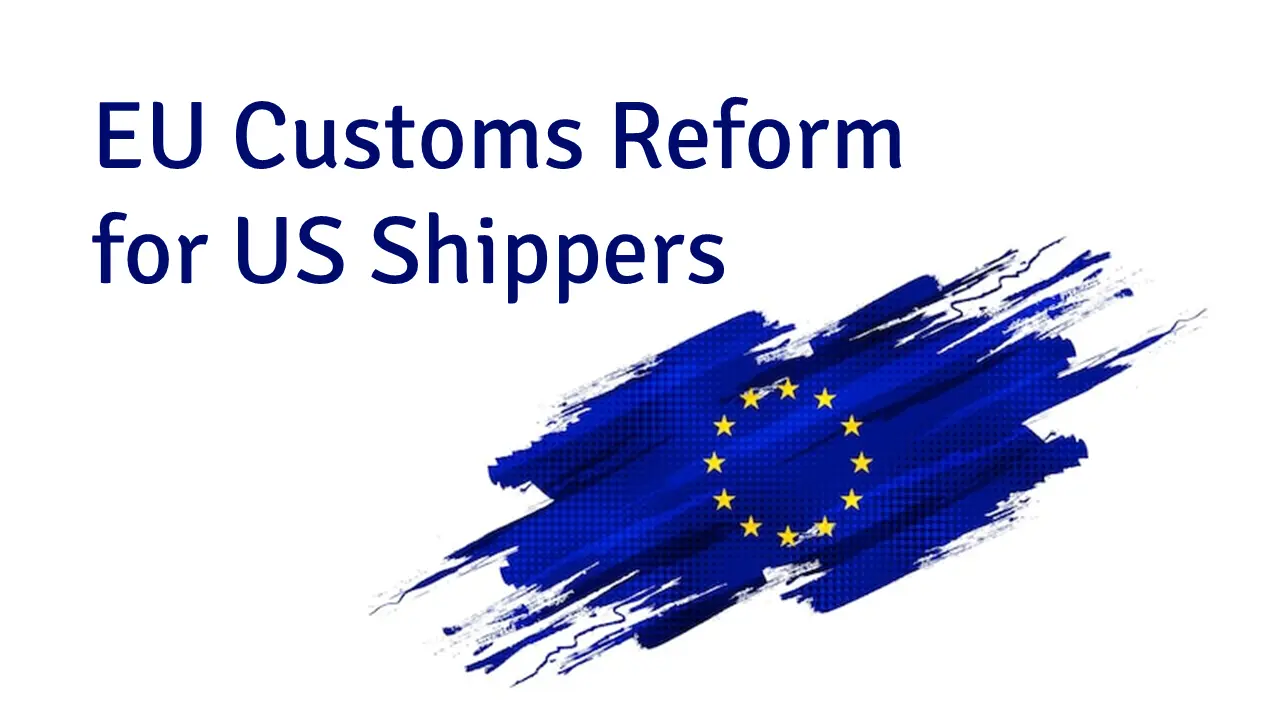Strategic Planning for U.S. Shippers Entering the EU and what the New Customs Reform Means for You

Dealing with the U.S. and EU market daily, I’ve witnessed firsthand the increasing complexity and opportunities that comes with shipping goods from the United States into the European Union. Whether you’re a high-growth e-commerce brand or a legacy manufacturer expanding your market footprint, strategic planning is the difference between scalable success and costly missteps.
Here are five critical areas U.S. shippers must address to build a resilient, EU-ready shipping strategy.
1. Understand the Regulatory Landscape
Post-Brexit, the EU’s regulatory environment has become more nuanced. The EU’s VAT (Value-Added Tax) rules, particularly the Import One-Stop Shop (IOSS) system, can be confusing at first glance but are essential to manage properly. Failing to register for IOSS, misclassifying goods under HS codes, or overlooking product-specific regulations can result in long delays or rejected shipments.
Strategic Tip: Consult with trade compliance experts early and establish a robust documentation and compliance process that scales with your volume.
A Note on EU Customs Reform
The EU is also rolling out a major Customs Reform initiative aimed at simplifying and digitizing cross-border trade. With a new EU Customs Data Hub and real-time data requirements on the horizon, U.S. exporters should start preparing for a future where transparency, automation, and speed are mandatory. This reform will streamline procedures but raise the bar for compliance, making it essential to invest in digital documentation systems and customs-ready logistics partners.
2. Leverage EU Distribution Hubs
Europe isn’t a monolith. Shipping into Germany is a different game than shipping into Italy or Poland. Establishing a distribution hub in a central EU country, like the Netherlands or Belgium for example, can streamline customs clearance, reduce last-mile delivery costs, and improve customer satisfaction through faster delivery times.
Strategic Tip: Consider bonded warehouses and evaluate regional fulfillment providers to localize your supply chain footprint.
3. Optimize for Duties & Tariffs
Despite trade agreements, tariffs and duties still vary based on product category and origin. Strategic classification and country-of-origin rules can reduce costs, especially when coupled with trade agreements like the EU-U.S. Mutual Recognition Agreement (MRA).
Strategic Tip: Perform a cost analysis for your top-selling SKUs to understand the full picture, including tariffs, duties, and logistics expenses. Also consider a customs audit.
4. Adapt to Consumer Preferences and Packaging Norms
EU consumers care deeply about sustainability, product traceability, and data privacy. That means U.S. shippers must rethink packaging, labeling, and even returns processes to align with expectations and regulations like GDPR and eco-labeling directives.
Strategic Tip: Localize packaging and offer transparent return policies. Consider eco-friendly materials and ensure all consumer data practices are GDPR-compliant.
5. Build Relationships with Local Partners
Success in the EU requires local insight. Collaborating with experienced professionals can reduce risk and accelerate time to market. Language, culture, and business etiquette matter especially in B2B shipments or when negotiating distribution agreements.
Strategic Tip: Invest in building relationships, not just transactions. Long-term partnerships reduce friction and increase agility when market conditions shift.
Final Thought
Entering the EU market isn’t just about logistics, it’s actually more about alignment. Align your supply chain, compliance, branding, and partnerships with the EU’s distinct market realities. In doing so, U.S. shippers can unlock a sophisticated, high-value consumer base—and build a more future-proof global operation.
For companies willing to plan strategically, the EU offers not just a challenge, but a compelling growth frontier.
Are you a U.S. retailer shipping into the EU? Let’s set up a time to chat, request a free discovery call: TDR Discovery Call

